Written by Terry Smith
Our site is reader supported so when you click a link to Amazon we may earn an affiliate commission.
UK’s best binoculars for bird watching with options for under £100 and budget
This article was last updated on November 23rd, 2021 at 3:35 pm
It doesn’t matter if you are just getting into bird watching, or if you are a more seasoned ‘birder’, one piece of kit that should be right at the top of your shopping list is a great set of bird watching binoculars.
The best binoculars for bird watching need to offer the right combination of a good field of view, sharp image clarity, should be not overly complicated to operate, and shouldn’t cost you the Earth ideally under £100 should get something sensible and a budget of £30 can get you going as you check the reviews. They should also be durable and not overly heavy or cumbersome. While there are very expensive brands and models of binoculars for bird watching, we decided not to concentrate on them and instead review the products that most people are buying when they are first starting out in the hobby, although we did feature one or two that were from better known brands.
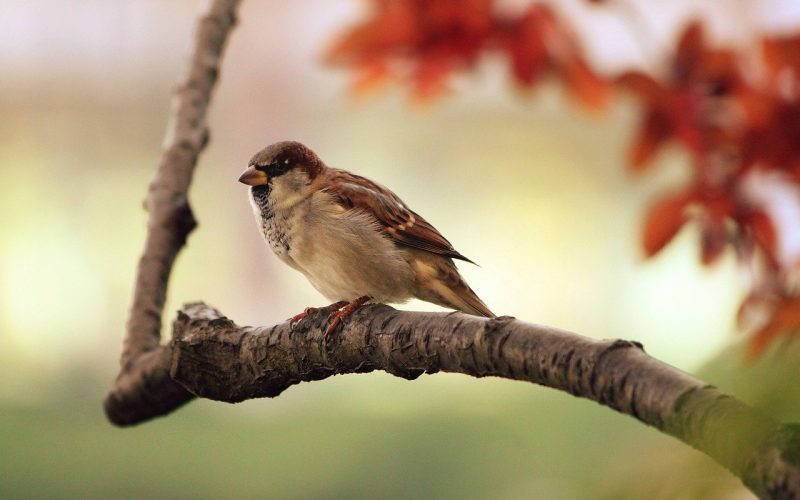
With new birders in mind, we also included the binoculars for bird watching buyer’s guide on this page that can aid you when making your decision on a pair of binoculars by pointing out features and such that all good bird watching binoculars should have. Also while I’m at it, I have to let you know about a bird box camera – things brings the birds to you and flips the game 🙂
The products we picked out as offering the best value for money are:
Best bird watching binoculars in the UK rated on price and performance – Editors picks:
Olympus DPSI Binoculars – best bird watching binoculars under £100, and our best overall for value in the UK.
Celestron 71007 SkyMaster– best birding binoculars over long distances. The high magnification coupled with quality optics is a great combination.
Celestron DX Nature Binocular 8×42 – best garden binoculars UK. The ability to focus on both close and far away objects makes them great for watching birds in the garden.
Nikon Prostaff 7S 8×42 Binocular – best compact bird watching binoculars. Small, but with impressive clarity and build quality, these binoculars are hard to beat.
Adasion HD binoculars – best lightweight binoculars for bird watching. If you’re going to be on the move a lot, these lightweight binos will be perfect for you.
Vortex DB-215 – Best 10×42 binoculars for bird watching and crystal clear images (under £300)
Kylietech binoculars for adults – best budget binoculars for bird watching. For 30 quid, you’d be hard pressed to find better than these, very very cheap!
Binoculars for Bird Watching Buyer’s Guide
One thing about starting any new hobby or interest is that there is always a lot of new vocabulary and terms to learn. When it is a hobby that involves some technology like a pair of binoculars, you can times that by ten. There’s no need to worry though because we have you covered with our handy buyer’s guide. We will look at the different things that you should be interested in when choosing your first good pair of binoculars for bird watching.
Magnification
So, you’ve probably seen models that have 8×40, 10×42, etc in the name. The first number is the magnification level and the second is the size of the objective lens. As a new birder, you will probably want to stick to something around 8×40, like the Celestron DX Nature Binoculars, as this will make it easier for you to focus on your target and to keep it in your sights. A higher level of magnification, such as the 25x 100 on some Celestron 71007 SkyMaster binoculars, will allow you to see animals and objects further away, but any shaking will be much worse at these magnification strengths.
Here’s a great little video on the subject of binocular magnification:
Size
If you read through our reviews above you soon realise that bird watching binoculars come in a variety of shapes, sizes and weights. Have a good think about what you intend to do with your binoculars before you decide on a pair.
If you want to be able to move around easily, you’ll probably be better off with a lightweight compact pair. If you plan on using a tripod and going for longer range watching, the weight of the binoculars won’t be an issue , nor will shaking so you can afford to have something larger and heavier with a stronger magnification.
Price range
How much are you prepared to spend? The cheapest of our reviewed Kylietech binoculars cost not much more than 30 pounds, while the Nikon ones were under £300, that’s quite a difference. Then there are much pricier top tier models that we didn’t feature here because they are outside of a lot of people’s price range.
As with most things in life, you get what you pay for, and generally more expensive models will be better, but that doesn’t mean that you can’t pick up a very good pair of binoculars for your bird watching for under £100, the Olympus DPSI, Adasion, andCelestron 71007 SkyMaster are a fine example of that – well under £100.
If you do go for a budget model, you have to expect that certain things might not be up to the highest standards, such as the free accessories that come with it, but for a new birder, the products we reviewed today should see you ok until you are ready to upgrade in the future.
Money no object, and you want the best out there? Well, then you should look for a pair of Swarovski binoculars like the ones in the image below. You will have to pay close to 2000 pounds for them though:
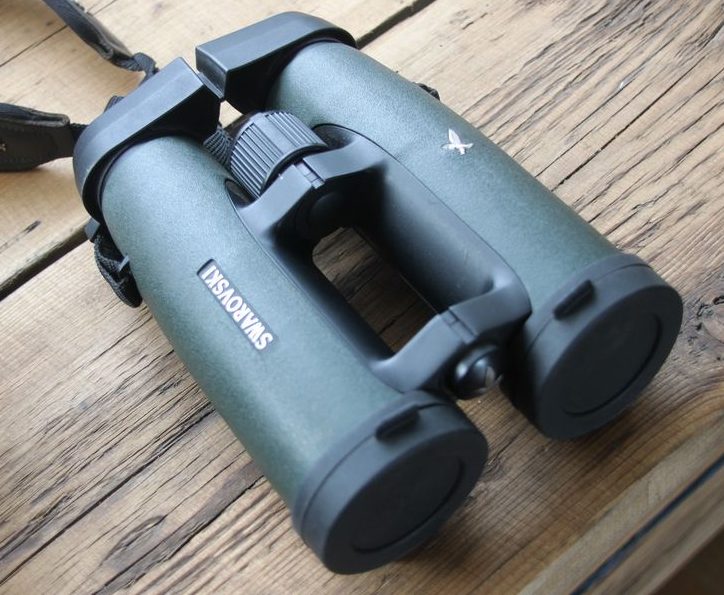
Features
The most important features on your bird watching binoculars will be the focus controls and the eye cups. The main focus dial should be large enough, and well positioned so that you can easily adjust the focus with a single finger. The smoothness and response of this control is equally as important. A secondary focus adjusted on the lens is also something to look out for.
When it comes to eye cups, the best thing is to get twist adjustable ones, especially if you wear glasses as they offer more control over the viewing position than fold down cups. A good product that has this are the Nikon Prostaff 7S 8×42 Binocular.
Other important things are waterproofing and dust proofing. If a pair of binoculars has been nitrogen or argon purged it means that they are airtight, and therefore much more resistant to these things, and therefore ideally what you should be buying if spending a lot of time outdoors in rough conditions.
There is still debate over which is better- argon or nitrogen for this purpose, but this next clip goes into it in more detail:
1. Olympus DPSI Binoculars
If I had to choose the best value for money pair of binoculars for bird watching, these would be them. The image quality and clarity is at a level that I would expect to see in much more expensive models. This is due to the anti-reflective lens coating that Olympus have given these binoculars which, along with the porro prisms, and aspherical lenses, really help to provide you with more colour and brightness. The images also have a nice ‘3D’ look to them, which says a lot about the quality of the optics.
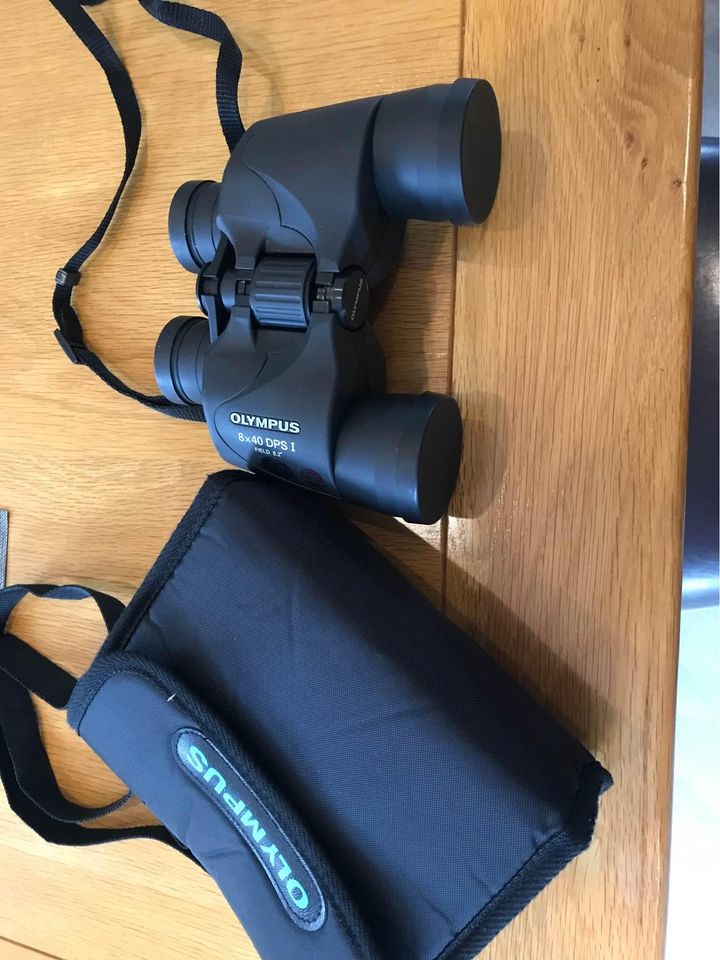
A 6.5 degree field of view makes things easier when trying to track a moving bird, and if you buy the 8-16 x 40 version of these excellent binoculars, you will be able to use the variable zoom to keep an eye on it even as it flies off into the distance.
With the model we tested weighing just under 800 grams, they have enough about them not to feel flimsy while still being light enough to hang around your neck or carry in the hand without it bothering you.
They are great for people new to bird watching because of how easy to use they are. The large focus knob that sits right in the idle of the binoculars is easy to find with your finger without taking your eyes away from the target. The response to the controls is very quick and it all felt smooth working together.
These binoculars aren’t designed for night vision, however they work surprisingly well in low light conditions around dusk, and you can use them to get a better look at the moon at night.
Overall finish and build quality of the Olympus DPSI bird watching binoculars is excellent, with a solid feeling to everything and a rubber coating for extra grip in rainy conditions.
There are a few little things that some people might gripe about, such as the lens caps not being tethered, so you have to be careful not to drop or lose them, and the neck strap could be a bit thicker and more comfortable, but these are just me trying to find faults really and not something that would bother the vast majority of people, and as an added bonus, Olympus have thrown in a free padded carry case for these DPSI bird watching binoculars.
These are top notch binoculars for bird watching at a very affordable price, and in my opinion you can’t go wrong with them.
Pros
- porro prisms, and aspherical lenses, give you and colourful and crystal clear ‘3D’ image.
- 6.5 degree field of view makes tracking moving objects easier
- Quick response to the focus controls is great for beginners
- Excellent value for money
- Work well in low light conditions
Cons
- Lens caps aren’t tethered so you’ll have to be careful not to lose them.
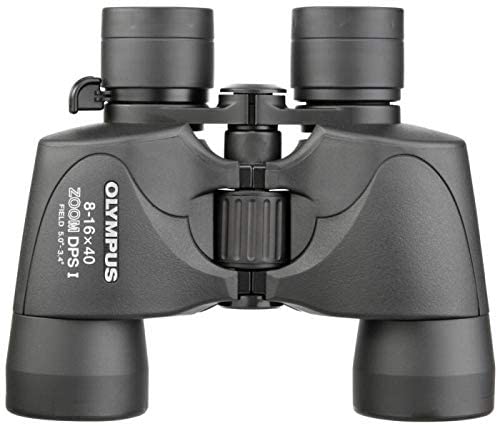
Other articles you may like
- Best bird box camera reviews – wi-fi and cable cameras [UK]
- Best bird tables to attract a plethora of wildlife
- How to Attract Birds to Your Garden
- Everything You Need To Know About Bird Feeding
2. Celestron 71007 SkyMaster
Plan on doing your bird watching from a greater distance, or maybe a bit of celestial body spotting? Well, in that case you are going to need some binoculars with a higher magnification like the Celestron Skymaster range.
Available in a selection of sizes and magnification levels ranging from 12 x 60 to 25x 100, these are not the type of bird watching binoculars that you can carry around easily and swing up to your eyes to catch a glimpse of passing bird as the high magnification would make the image to shaky to make that practical. Instead, these are meant to be mounted in a tripod and used at greater distances than say the Olympus DPSI binoculars.
We tested the 12 x 60 model in the daytime, at dusk, and at night, and we’re impressed by the performance all three times. The larger diameter of the objective lens allows for more light to enter, and this has a dramatic effect on image clarity, especially at dusk and at night.
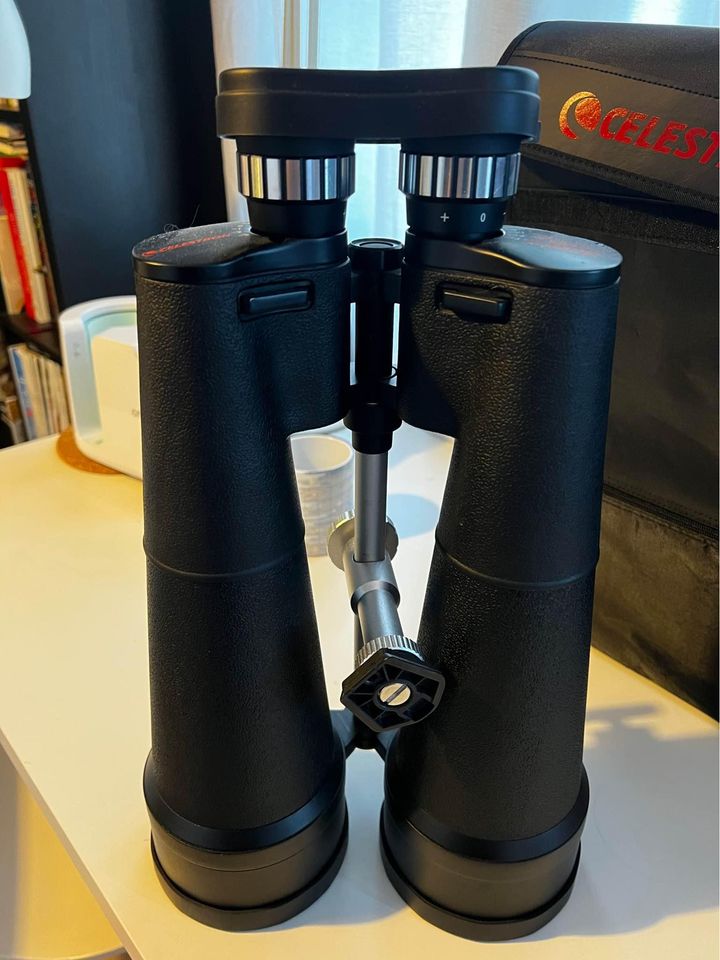
If you plan on doing some star gazing, this is probably the model to go for. I was staring at the details on the moon and was absolutely taken aback by the sharpness and colour contrast. This is no doubt thanks to the BAK-4 porro prisms and multi-coated optics. The field of view is also nice and wide.
Celestron has done a great job at making these binoculars hardwearing. The casing is very thick and solid, and there is a rubber coating to them. The eye cups are also made of thick, yet soft rubber, and these can be used with eyeglasses by folding them down.
This solidity also means that these are quite heavy binoculars and weigh in excess of 1.1 kilograms. Still, if used with a tripod like they are meant to be, this shouldn’t be a problem.
For the low price, you get quite a few accessories thrown in by Celestron including a carrying case, neck strap, lens cap, lens cloth, and rain guard.
The lens caps are untethered again like the Olympus DPSI, but the strap is thick and comfortable, and while the other accessories didn’t blow me away, there was nothing wrong with any of them and about what is to be expected at this price.
Pros
- Excellent magnification is ideal for sky gazing and long distance bird watching
- Larger diameter of the objective lens lets light in for dawn, dusk, and nighttime use
- Very solid and you won’t have to worry about durability
- Foldable eye cups make these binoculars accessible for people wearing glasses
Cons
- Might be a little heavy for kids and smaller adults to use for long periods
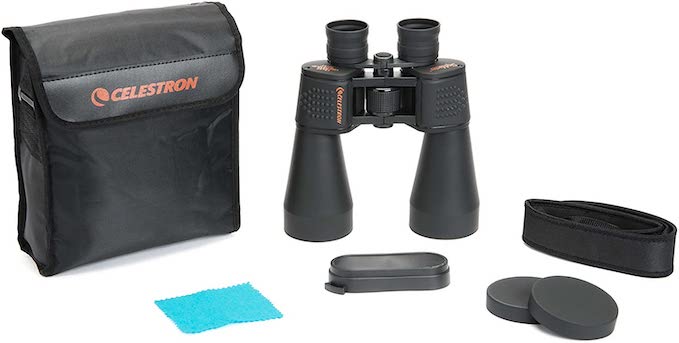
3. Celestron DX Nature Binocular 8x42
As the name implies, Celestron’s DX nature binoculars have been made with bird/animal watching in mind. To give you the best light transmission, Celestron have used fully phase coated BAK-4 prisms and multi-coated lenses so the level of detail and contrast is just what you want when out looking at nature- excellent.
What I like about the DX nature binoculars is that they combine the ability to view far off wildlife through the 8×42 magnification, with the close range focus that allows you to see things that are less than 7 feet away just as clearly. This is perfect for viewing butterflies and other insects in more detail.
If you wear glasses it’s not a problem with these binoculars for bird watchers as they have twist adjusted eye cups. There are multiple stopping positions too, so you can find that comfort sweet spot.
To keep your binoculars safe from accidental bumps and knocks, the casing has been made out of a strong polycarbonate and then covered in a thick rubber coating which adds yet more protection and also helps with grip.
They are also fog proof, waterproof, and are completely airtight thanks to nitrogen purging. This means you won’t have to worry about water, dust, and other foreign objects getting into the important parts of your birding binoculars. For this review, we tested the 8×42 model as this is about the perfect type for beginner birders, but there are other models in the range with greater magnifications if that interests you more.
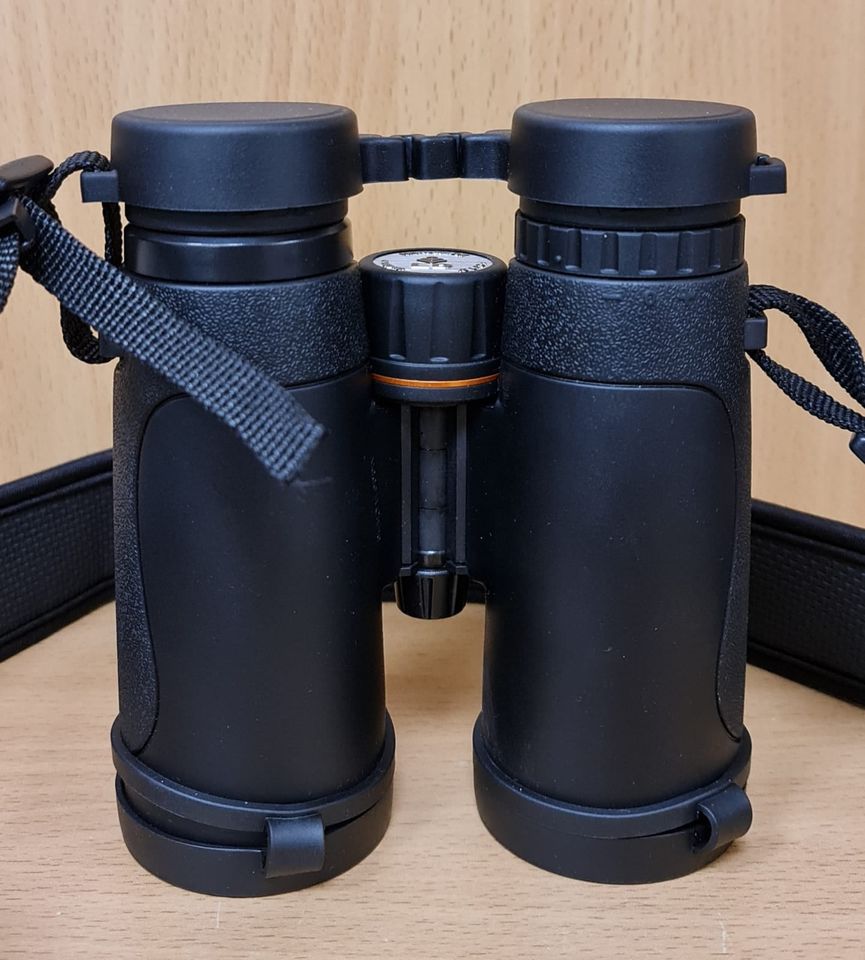
At 790 grams, they weigh about the same as the Olympus DPSI so you won’t find them too difficult to hold for prolonged sessions, and the 8×42 model isn’t too large or bulky either, but I can’t comment on the other models in the same range.
As usual, these binoculars for bird watchers come with the almost obligatory set of accessories that we’ve already mentioned in the other reviews i.e. carry bag, strap, etc. Once again they are not bad, nor will they fill you with excitement, but they will do the job they are intended for.
Pros
- Fully coated BAK4 prisms provide a lot of light and colourful images
- Can focus on far away objects and things up close
- strong polycarbonate casing with thick rubber coating makes these binoculars very durable
- Nitrogen purged for water and dust proofing
Cons
- Accessories are only average quality, but that’s to be expected for the price range.
4. Nikon Prostaff 7S 8x42 Binocular
These Nikon Prostaff binoculars for bird watching/hunting are considerably more expensive than most of the other reviews, priced at just shy of 180 pounds on Amazon when I was writing this. For the extra money. I have to admit that you do get a superior image quality with colours, details, and that ‘3D’ effect I spoke about earlier being even more noticeable when looking through these. The brightness is striking when compared with lower quality models and this is because the Nikon Prostaff uses high reflection, multi-layer, mirror coated roof prisms.
With twist adjustable, rubber eye cups that stop on 4 settings, a super smooth and responsive main focus dial, and a secondary focus dial to adjust to your eyesight behind the right side eye cup, getting the set up just to your liking is no hard task.
One of my favourite things about these bird watching binoculars is the ergonomic shape of them. Anyone who has had to hold a pair of binoculars for a long time will tell you how important it is to have a pair that sit naturally in your hand, and these are some of the most comfortable I’ve ever used.
They are also lightweight at only 650 grams, despite being longer than some of the heavier models, and there is the option to mount these binoculars on a tripod although I personally don’t see any reason to do that.
One reason for the lack of weight is because they are a polycarbonate construction which keeps them from being heavy while still giving them a lot of strength and durability. Like most decent binoculars for bird watching these days, they have a rubber coating to help prevent damage from shock and slippage.
Like the Celestron nature binoculars we just reviewed above, Nikon’s Prostaff have been nitrogen purged so you won’t have trouble with them fogging up or getting damaged by particles. They are also completely waterproof. Even if you drop them in water, as long as you get them out within 10 minutes, they will be perfectly fine.
One thing I was disappointed with with the Nikon Prostaff was the quality of the accessories. For the extra you pay for these binoculars, you would expect rubber lens caps but unfortunately they are the same plastic covers you get with cheaper models. It’s not a deal breaker for me, but I would have expected more for the money. Apart from that small flaw, I really can’t say anything bad about the Nikon Prostaff and would recommend them to any serious beginner birder.
Pros
- Beautiful images with a ‘3D’ effect that sets them apart from cheaper models
- high reflection, multi-layer, mirror coated roof prisms give incredible contrast and colour
- Very compact and lightweight. Perfect for hiking and bird watching.
- Extremely well protected against water and particle damage
Cons
- Lens caps are not as good as expected for the price.
5. Adasion 12x42 Professional HD Binoculars for Adults with Smartphone Adapter
These particular binoculars are selling like hot cakes online at the moment, and it seems that the vast majority of buyers are more than happy with what they got for their money. Because of this we decided to take a closer look at them for ourselves, and we were not disappointed either. The main thing that stuck out for me was how clear the image is when looking through these Adasion binos. The combination of the 42mm FMC lens and the 16.5mm Bak4 prism gives you excellent light transmission, and this delivers a bright, sharp, and beautifully coloured experience.
This experience is only accentuated by the larger than average 18mm eyepieces that allow you to truly appreciate the magnification, and you don’t have to rely on your memory to recall all the images you will be treated to through them thanks to the smartphone adapter that comes with the binoculars. The simple adapter connects the front of the binoculars and then lets you attach your smartphone so you can capture the provided images using your phone’s camera. It’s easy to set up, and once you get used to it, works surprisingly well for such a simple attachment. What’s more it will work with all the well known smartphone brands and models.
Weighing only 560 grams, these Adasion binoculars are lightweight, and this makes them suitable for adults and kids. Their 12×42 magnification is perfect for people who want to use their binoculars for a range of activities too, be that birdwatching, star and moon gazing, or hiking trips. They can even be used with a tripod using the ¼” thread interface, so, altogether, I’d say that makes them very versatile. If I was going to suggest improvements to these binoculars for future updates, it would be to improve the colouring at the very edges of the lens to be as good as when in the centre of your view. But, at the price they are asking for these binoculars, I shouldn’t be surprised that there’s a little chromatic aberration, and to be fair, it isn’t bad at all.
Also, I would increase the water and dustproof rating. At the moment, they have been tested to IP55, which is fine if you’re using them in mostly dry weather and the odd shower. However, if you’re out in the worst conditions regularly, or there’s a chance they’ll be submerged somehow, you might damage them. To protect the lenses, there are individual rubber caps for each of them. I liked the fact that you could choose to either have them connected all the time for quick covering and making sure they dont go missing, or remove them completely and replace them when you’re done for the day. There’s also a carry case included in the price that seems durable enough, even though I would have preferred a leather one, personally.
At the end of the day, these binoculars would be an excellent choice as a first pair for beginner birders. They’re not too expensive, but better built than the truly budget models. They also provide you with a much more colourful image, and come with a smartphone attachment, so you can show your loved ones what you encountered on your walks.
Pros
- 42mm FMC lens and the 16.5mm Bak4 prism provides very naturally coloured images
- 12×42 magnification allows you to get a good close up view of the moon
- Phone adapter works well once you work out the kinks
- Lightweight yet strong and robust build quality
Cons
- Slight chromatic aberration can be seen at certain angles
If you’d like to know what these adasion binoculars look like in 3D, take a look at the following video:
6. Vortex DB-215 Optics Diamondback HD 10x42 Binoculars
While any experienced bird watcher would tell you that 200 pounds or so is definitely not a lot of money to pay for a pair of decent binoculars, some people new to the pastime might not want to shell out that much on their first pair. However, I have to say that by paying that little bit extra, you will get a much better pair to view those avian angels with, and these DB-215 binos from Vortex are right up there with the best for the money.
Let’s start off with the overall quality of these binoculars. While lower cost models like the Adasion binos we just reviewed can impress with their sturdiness, the DB-215 are just on another level, feeling absolutely solid throughout. Another thing that is excellent on these binoculars is the optical clarity. The FMC lenses do an amazing job of channeling light through, and the dialectic coating means that you will get images that are very colour accurate, with no dimming or dulling.
Chromatic aberration can often be a problem with binoculars when you’re not paying into the high hundreds, or even thousands, of pounds. However, Vortex have done a bang up job with their DB-215s and you are given crystal clear images through the good-sized eye-cups. The 10×42 magnification is ideal for getting close up images from a far enough distance away that you don’t spook the birds, while not being too zoomed in that beginners would find it hard to relocate anything if they move too quickly. On top of that, you can really dial in the clarity with a combination of the central focus dial and diopter on the right eyepiece.
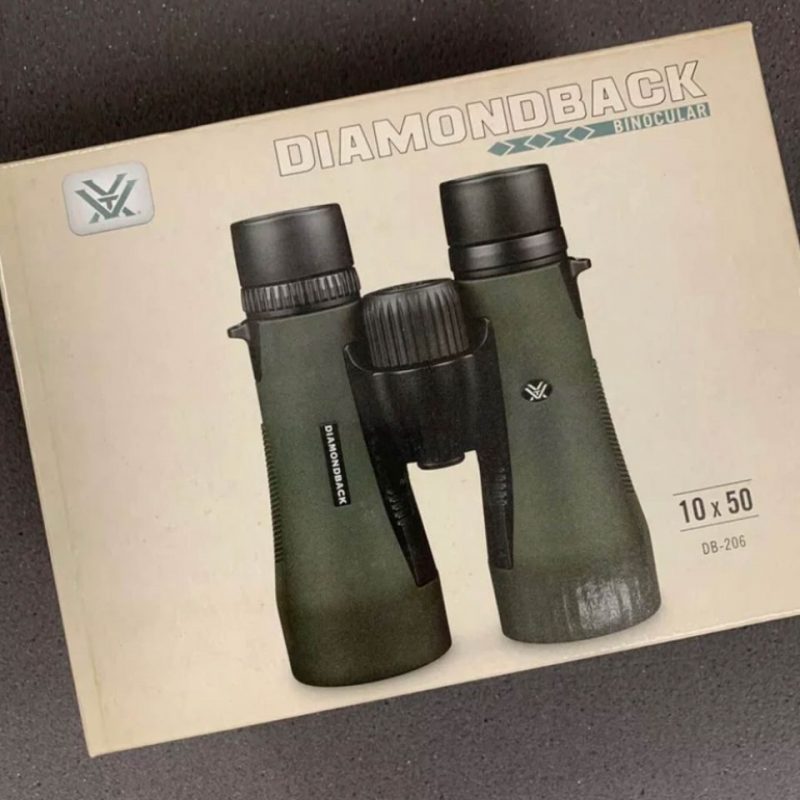
The diopter is a great feature if you’ll be sharing your binoculars with another person, say your other half or children, because you can use it to adjust the focus to suit each individual’s eyes, quickly and easily. Problems with fogging and water damage are negated by O-ring seals and argon purging, so you don’t have to wait for the weather to be just right to get out in the fields- just remember to bring your raincoat. There are good quality rubber caps for the lenses just in case, and a stylish carry bag to boot, although the quality of this bag isn’t as good as the binoculars themselves.
The Vortex DB-215 binoculars is a quality product that could honestly compete with models that cost two or even three times as much, in some cases. There are a couple of places where you can see where the money has been saved though, such as with the carry case handle, and when in very low light they don’t produce as clear an image as more expensive binos. Still, they are some of the best for price.
Pros
- Feel very solid and robust, with no signs of any unwanted movement or rattling.
- Dielectric lenses help you to observe very naturally looking images
- Focus and diopter is very responsive to the controls and easy to get settings as you want them
- Argon purged and o-rings keep the binoculars well sealed off from water and dust
Cons
- Carry case isn’t up to the same quality as the binoculars themselves
7. Kylietech 12x42 Binocular for Adults
If you’re thinking of trying birdwatching for the first time, and you’re just booking for a very inexpensive pair if binoculars to use while you get your feet wet and decide whether or not this hobby is for you, you could do a lot worse than spending thirty quid or so on these Kylietech ones.
Now, just to be clear, you can’t expect the same quality from a 30 quid pair of binoculars as you would from something that costs 5-10 times that much, and there are few minor issues that you’ll have to get used to, so I thought I’d cover them first, so that you know what to expect.
The first thing is that although they are advertised as being a 12×42 magnification, there’s no way that I can believe that, and I would guess it’s more like a x8 or x10 zoom instead. This shorter zoom is actually better for beginners, so I don’t know why they are using false advertising.
Secondly, the focus will not work on images that are closer than about 6 metres away, so don’t buy them and expect to be able to use them to watch the birds in your garden from your bedroom window.
At a distance though, they are decent budget binoculars. The image is nice and clear, with decent colours, thanks to the BAK4 prism and you can use the centrally located dial in combination with the diopter on the right eyepiece to sharpen up what you can see. The dial to adjust the focus was a little stiff for me, I have to say, but then again I’m used to the silky smooth rolling found on much more expensive models, so perhaps I’m being a bit unfair.
For such a low cost pair of binoculars, I was surprised to see that they have been nitrogen purged, giving them a good level of protection against water and dust. There is a nice anti-slip coating to them too, and a few other features, like being able to adjust for people wearing glasses, that are normally only seen on pricier items.
I found nothing wrong with the build quality of the casing and there weren’t any rattles, or loose parts anywhere, which was surprising considering how light these binoculars feel in the hand. This lack of weight, plus the low price, makes them an ideal first pair for a kid I think, and if you can work out the kinks in using the smartphone adapter, I’m sure they’ll love taking snaps.
So, if I was to sum up these Kylietech binoculars, I’d say that as long as you don’t expect perfection, and can put up with one or two small niggles, this could be 30 pounds well spent. If you’re experienced and want better quality, or you want a pair that you’ll use for years, expect to pay a lot more for them, like the Vortex DB 215 model we reviewed above.
Pros
- Very good build quality for a 30 pound pair of bird watching binoculars
- BAK4 prisms and large eyepieces allow a lot of light transfer through to your eye
- Lightweight but solidly built
- Good protection against water and dust thanks to nitrogen purging
Cons
- Magnification isn’t as high as claimed but still good enough for beginners



























